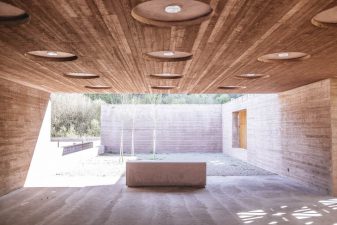 Though the practice of establishing Himas to protect nature had previously declined, the Middle East is currently witnessing a resurgence of this ancient tradition.
Though the practice of establishing Himas to protect nature had previously declined, the Middle East is currently witnessing a resurgence of this ancient tradition.
Now that Green Prophet has looked into the tradition of ‘Hima’ or environmental preservation in the Middle East, this post will explore some of the most famous examples of Hima and how they helped create sustainable societies.
As the birthplace of the Hima, the Arabian Peninsula is home to some of the most noted examples of Himas. The two most widely recognised examples are those established by the Prophet Muhammed [pbuh] in Mecca and Medina within Saudi Arabia. These were based on the meaning of Hima under Islamic law, which required that they be declared for the good of the wider community and not for the benefit of private individuals.
The Prophet Muhammed [pbuh] established the Hima of an-Naqi’ to the south of Medina and one surrounding Medina for very different reasons. The Hima around Medina was specifically preserved for the cavalry as the camels were allocated for charity and the livestock to serve the poor. The second around Medina more or less fits into the traditional model of conservation work and was based on a zoning principle.
Hunting was forbidden within a four mile radius and the destruction of trees or plants forbidden within a twelve mile radius. As well as conserving nature, Himas also protected the agricultural community from overexploitation by nomadic herders and allowed regeneration to occur to encourage resilience and sustainability.
Important Role of The Local Community
The practise of Hima continued to exist throughout the Middle Ages, varying in size from a few hectares to hundreds of square kilometres. According to a report titled ‘Hima: A Way of Life’ by the International Union for the Conservation of Nature: “Traditional himas made up a vast area of land under conservation and sustainable use, and on the whole, they became the best-managed rangelands in the Arabian Peninsula.”
Himas are traditionally ruled by the local communities through consensus and different groups held specific responsibilities such as collecting rainwater run-off and monitoring grazing. This is one of the main strengths of Hima- “it provides an incentive for local communities to invest in the maintenance of their natural resources and to protect them from abuse.”
Punishment for violating Hima under Islamic law included the slaughtering one or more of the trespassing animals to feed members of the local community as well as confiscation of livestock, the trespassers gear and even their clothes! More recently, however, the punishments tend to take the form of fines and imprisonment in the case of repeated offences.
The rise of the Ottoman Empire saw the decline of Hima as power and rule shifted away from local communities to more centralized governance. That decline continued into the twenty-first century.
For example, in the 1960s it was estimated that there were around 3,000 Himas in Saudi Arabia but this dropped to very small numbers. Whilst previously nearly every village in the southwestern mountains of the country was associated with one or more Hima, now there very few Himas actively managed by the locals.
The only two that have been consistently maintained are those in Mecca and Medina and till this day it is forbidden to harm any animal or plant in the Himas surrounding the two holy cities.
Even so, this ancient system of environmental protection does have it strengths and seems to be enjoying a revival in the Middle East. In 2006, the Lebanese village of Kfar Zabad embraced the principles of Hima after overuse of land and water almost destroyed the vast wetlands. Setup by the Society for the Protection of Nature in Lebanon, it was deemed a success with the return of migratory birds and other local communities showing interest as it empowered them directly by placing responsibility in their hands rather than some distant authority.
There is no doubt that the concept of Hima offers an important way for the Middle East to move forward and take the protection of nature more seriously- if only by showing that the region already has a long history of environmental protection.
:: Top image via Victor Bezrukov and lower image via Shira Gal on Flickr.
For More on Sustainability in the Middle East:
Hima: The Middle East’s Tradition of Environmental Protection
And Ye Shall Live in Sustainable Booths
5 Green Dating Ideas for the Middle Eastern Romantic




